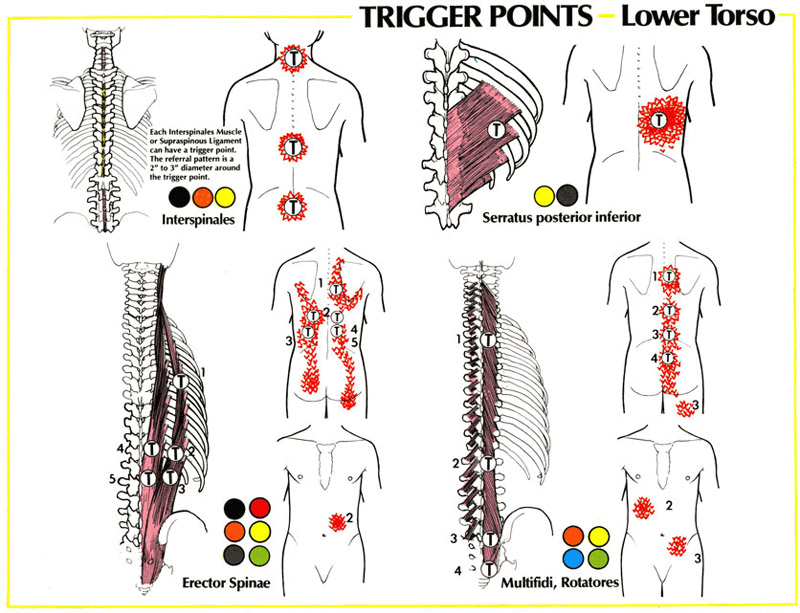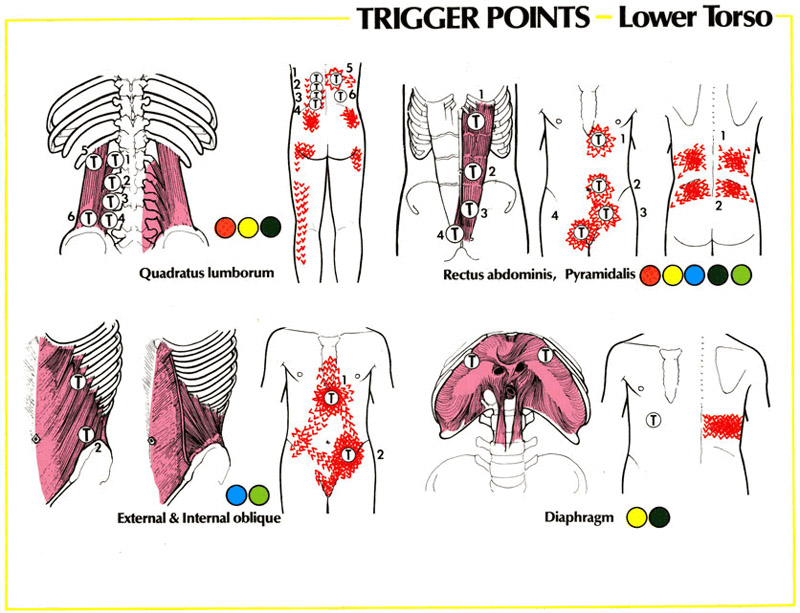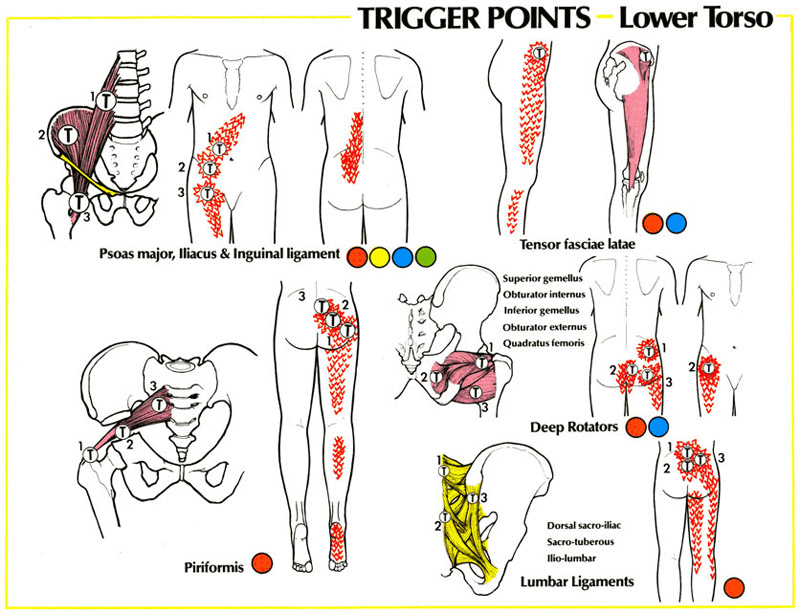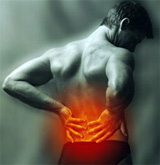
Most back pain that people tend to suffer from is basically a defense mechanism called Protective Muscle Spasm. A spastic muscle is a muscle which was forced to contract and lost its ability to stretch.
A spastic muscle resists being exercised, stretched or massaged because these activities will over-stimulate the central nervous system.
Muscle spasm could be activated by overuse, overstreching, or sudden trauma like a fall, car accident or being hit by an object.
When the hips are not level, the body’s center of gravity is thrown off, causing the spinal muscles to pull to one side as the nervous system attempts to keep the eyes leveled.
The lower back muscles which may be involved in spasms are:
- Erector Spinae – Long muscles along the spine, originating in the tail bone (sacrum) and attached to the back of the head and neck.
- Quadratus Lumborum – Side muscles attached to the lower spine vertebrae, the lower ribs, and the upper edge of the hip.
- Psoas – Extremely important muscle, attached to the spine from the front and side, and connected to the inside of the hip and leg. This muscle is the main culprit of lower back in our society, since we have become very sedentary. This muscle is the most used and abused in the body, because we use it all the time, while walking, standing and sitting. When this muscle gets tired and spastic, it will pull on the spine to the side, rotate it, causing the muscles in the back to resist the pull and get into a spasm too.
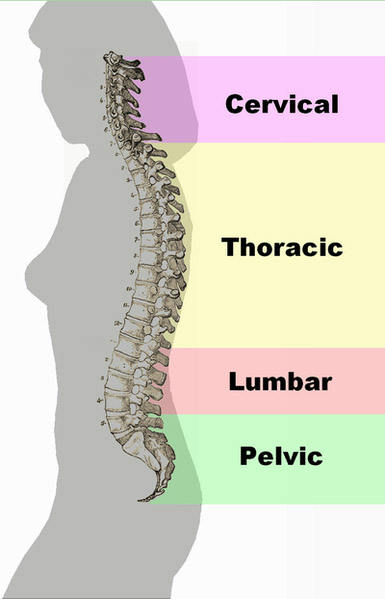
These three muscles often respond with a spastic reaction when the hips are not leveled horizontaly. The hips have to be leveled stucturally to make the body work efficiently, because they contain the body gravity center.
In addition these muscles respond to the “righting reflex” in the eyes. This reflex keeps our eyes leveled horizontaly so we will not get dizzy and be able to function.
When the hips are not level, the body’s center of gravity is thrown off, causing the spinal muscles to pull to one side as the nervous system attempts to keep the eyes leveled. While this allows us to continue to function, the muscles mentioned above which are forced to contract will work excessively and eventually become spasmed.
